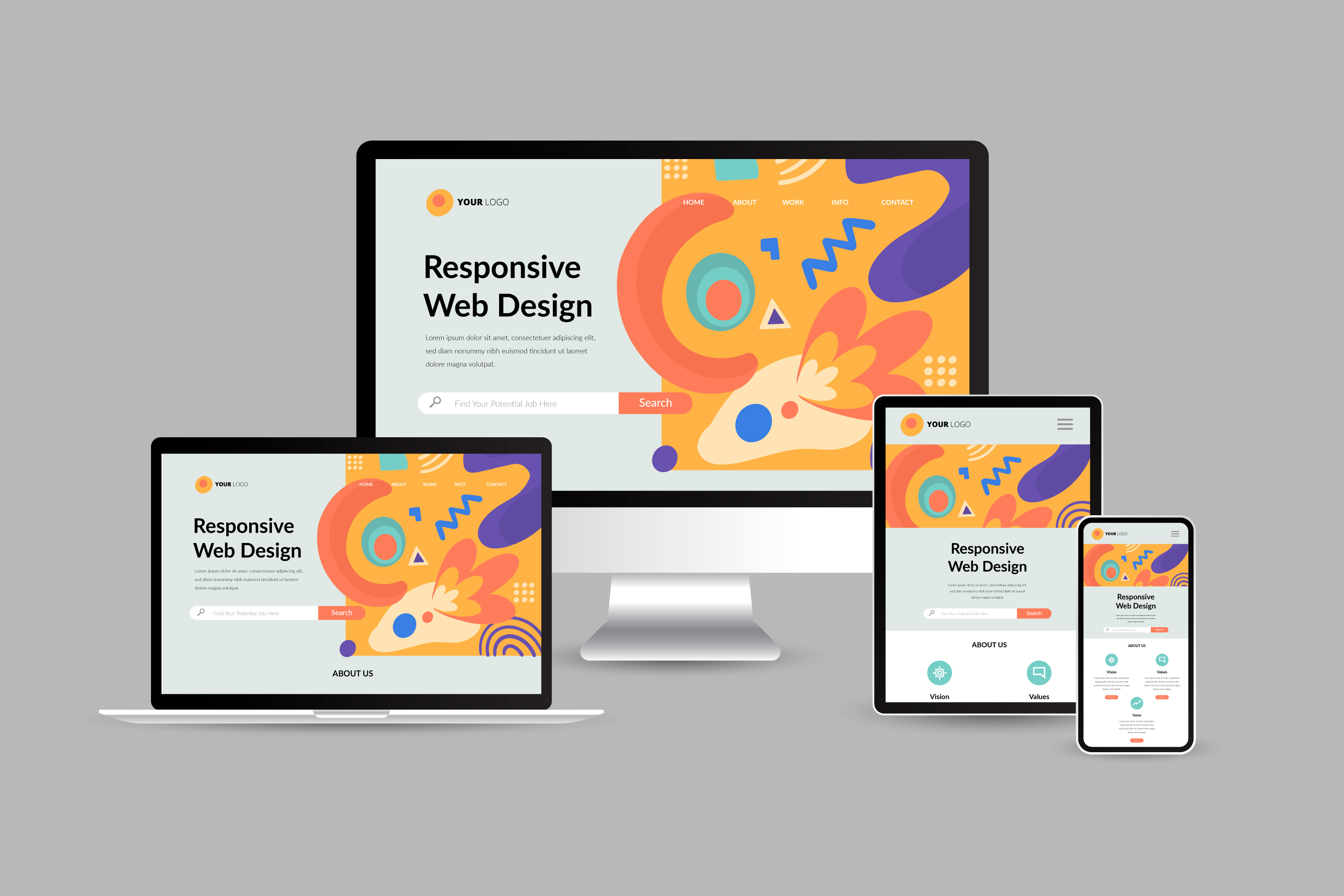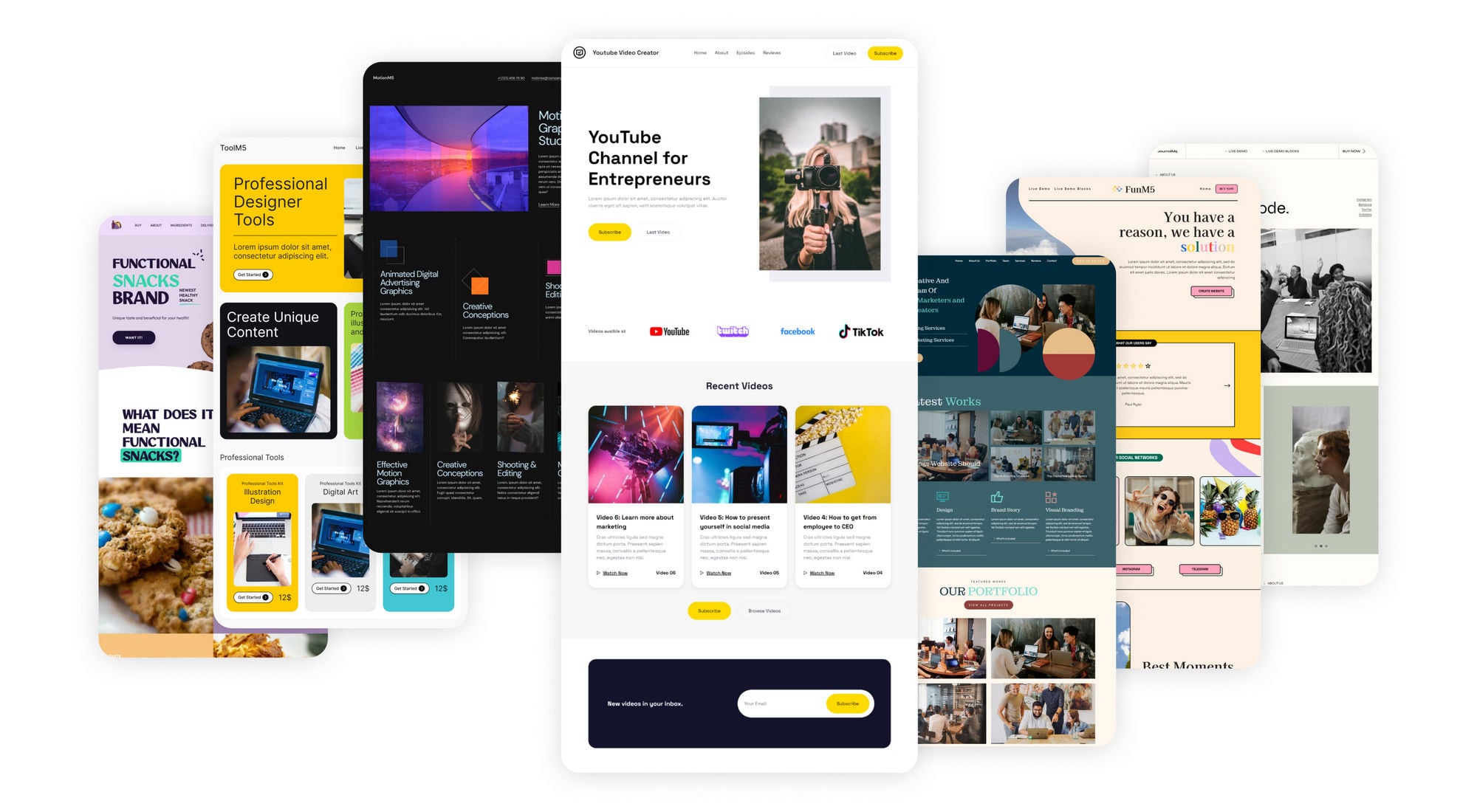Future-Proof Your Business with Cutting-edge Website Design Trends
Future-Proof Your Business with Cutting-edge Website Design Trends
Blog Article

Crafting a User-Friendly Experience: Essential Elements of Reliable Site Layout
In the realm of website style, the significance of crafting an user-friendly experience can not be overemphasized. Essential elements such as a clear navigating framework, receptive design concepts, and fast packing times function as the foundation for involving individuals efficiently. In addition, an instinctive interface coupled with easily accessible content standards ensures that all people, no matter capability, can browse effortlessly. Yet, regardless of these basic concepts, several web sites still falter in delivering this smooth experience. Comprehending the hidden aspects that add to efficient design can clarify how to improve customer fulfillment and involvement.
Clear Navigating Structure
A clear navigation framework is fundamental to efficient web site design, as it straight influences individual experience and interaction. Customers ought to have the ability to locate info easily, as instinctive navigating minimizes stress and encourages exploration. An efficient format allows site visitors to understand the connection in between various web pages and web content, leading to longer website check outs and raised communication.
To attain quality, developers ought to utilize acquainted patterns, such as top or side navigation bars, dropdown menus, and breadcrumb tracks. These components not only enhance functionality however likewise give a feeling of orientation within the site. Furthermore, preserving a consistent navigating structure across all pages is critical; this familiarity helps individuals prepare for where to discover desired info.
It is likewise vital to restrict the variety of menu things to prevent frustrating customers. Prioritizing the most crucial areas and employing clear labeling will certainly assist site visitors efficiently. Furthermore, incorporating search capability can further aid users in finding particular content quickly (website design). In recap, a clear navigating framework is not simply a style option; it is a critical element that dramatically impacts the general success of a site by fostering a effective and delightful user experience.
Responsive Layout Concepts
Effective site navigation sets the stage for a smooth individual experience, which becomes much more essential in the context of receptive style principles. Receptive layout makes certain that web sites adjust fluidly to numerous display sizes and orientations, enhancing accessibility across tools. This versatility is attained via versatile grid formats, scalable images, and media queries that allow CSS to change styles based on the gadget's qualities.
Secret principles of responsive style consist of fluid designs that use percentages instead than fixed units, guaranteeing that elements resize proportionately. In addition, utilizing breakpoints in CSS allows the layout to shift smoothly between various tool sizes, enhancing the layout for each screen kind. The usage of responsive photos is likewise important; photos must immediately adapt to fit the screen without losing quality or causing format changes.
Moreover, touch-friendly user interfaces are crucial for mobile individuals, with sufficiently sized switches and user-friendly motions improving user interaction. By integrating these principles, designers can develop websites that not only look aesthetically pleasing but additionally provide useful and interesting experiences across all tools. Eventually, efficient responsive design promotes individual satisfaction, lowers bounce prices, and encourages longer engagement with the content.
Fast Loading Times
While customers significantly expect websites to pack quickly, fast packing times are not simply an issue of convenience; they are crucial for retaining site visitors and improving total user experience. Study shows that customers usually desert web sites that take longer than three secs to lots. This abandonment can result in raised bounce rates and reduced conversions, eventually hurting a brand name's online reputation and revenue.
Fast filling times improve user engagement and contentment, as visitors are more probable to discover a website that reacts quickly to their communications. Additionally, search engines like Google prioritize rate in their ranking formulas, suggesting that a slow website may have a hard time to achieve exposure in search results page.

Instinctive Interface
Quick packing times lay the foundation for an engaging online experience, yet they are only component of the equation. An user-friendly interface (UI) is crucial to make certain visitors can navigate a web site effortlessly. A properly designed UI permits users to accomplish their objectives with minimal cognitive tons, promoting a smooth communication with the site.
Crucial element of an user-friendly UI include constant layout, clear navigating, and identifiable icons. Uniformity in style components-- such as color design, typography, and button styles-- helps individuals understand how to engage with the internet site. Clear navigating structures, including logical menus and breadcrumb trails, enable customers to locate info promptly, decreasing stress and improving retention.
In addition, comments devices, such as hover results and packing indicators, notify individuals about their activities and the internet site's response. This transparency grows depend on and encourages ongoing engagement. Prioritizing mobile responsiveness makes certain that users delight in a natural experience throughout tools, catering to the varied methods audiences accessibility material.
Easily Accessible Web Content Standards

First, make use of uncomplicated and clear language, avoiding lingo that might confuse visitors. Stress proper heading frameworks, which not just aid in navigation however likewise help screen visitors in translating material pecking orders efficiently. Additionally, supply alternate message for pictures to communicate their definition to individuals that depend on assistive modern technologies.
Comparison is an additional vital element; ensure that text stands apart versus the background to improve readability. Furthermore, ensure that video clip and audio content consists of inscriptions and transcripts, making multimedia easily accessible to those with hearing disabilities.
Last but not least, integrate key-board navigability into your layout, allowing individuals that can not make use of a computer mouse to gain access to all website functions (website design). By sticking to these accessible content standards, web designers can create inclusive experiences that accommodate the requirements of all customers, ultimately improving individual interaction and fulfillment
Verdict
Finally, the integration of important aspects such read the article as a clear navigation structure, responsive layout my website concepts, quickly packing times, an intuitive user interface, and available material guidelines is essential for producing a straightforward web site experience. These parts collectively enhance functionality and involvement, making certain that users can easily navigate and communicate with the website. Focusing on these style aspects not only improves total complete satisfaction but additionally promotes inclusivity, accommodating diverse individual demands and choices in the electronic landscape.
A clear navigating framework is basic to efficient internet site design, as it straight influences individual experience and engagement. In summary, a clear navigating framework is not simply a layout option; it is a tactical aspect that considerably affects the total success of a website by cultivating a reliable and satisfying customer experience.
In addition, touch-friendly user interfaces are important for mobile users, with sufficiently sized buttons and intuitive gestures boosting individual communication.While customers progressively expect websites to fill rapidly, quick loading times are not just an issue of benefit; they are essential for retaining visitors and enhancing general individual experience. website design.In verdict, the integration of important aspects such as a clear navigating framework, responsive design principles, fast packing times, an user-friendly individual interface, and easily accessible material guidelines is crucial for producing an easy to use web site experience
Report this page